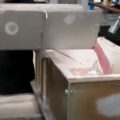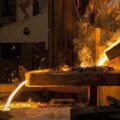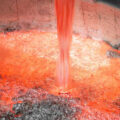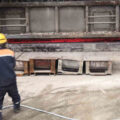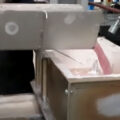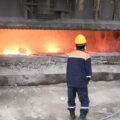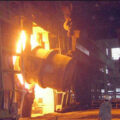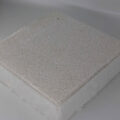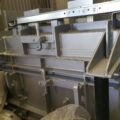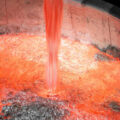Metal purification treatment is a very important link in the production process of aluminum cast-rolled sheet and strip. The traditional aluminum liquid purification process is generally operated in batches in a holding furnace, and nitrogen and chlorine mixed gas and flux are generally used for refining. This purification process is mostly manually operated. The outgassing rate is low, the refining is incomplete, the molten aluminum will be contaminated again in the process of transporting the molten aluminum from the holding furnace to the casting machine, and the labor intensity of the workers is high, the pollution is serious, and the Large-capacity furnaces are difficult to achieve by manual operation. With the emergence of high-precision products such as high-quality aluminum alloys for aviation and double zero aluminum precision, the quality requirements for ingots are getting higher and higher. The traditional aluminum liquid purification treatment process can no longer adapt to large-scale production and high-quality ingots. Thus, AdTech has developed an advanced new molten metal purification system outside the furnace. That is, the aluminum melt is refined and filtered during the transportation from the holding furnace to the casting machine, which can efficiently remove the soluble and insoluble impurities.
During the casting and rolling of aluminum strip, the alloy liquid can dissolve more hydrogen during the melting and pouring of the aluminum alloy, and the solubility of hydrogen decreases as the temperature of the alloy liquid decreases. When changing from a liquid state to a solid state, the solubility of hydrogen in aluminum suddenly drops, so that during the cooling and solidification process of the alloy liquid, more hydrogen is precipitated to form hydrogen bubbles, and there is no time to float up and discharge. In the solidified alloy, small, scattered pores, namely “pinholes” are formed.

In addition, there will be reactive pores in the aluminum melt, which mainly include two types: the pores formed by the interaction of molten aluminum and inclusions, and the pores formed by the interaction between the internal components of the molten aluminum. In the molten aluminum before casting, if the content of inclusions is high, or oxidized inclusions are caused by the destruction of the oxide film on the surface of the molten aluminum, the accumulation of hydrogen will result in the formation of pores.
Through experimental observations, alumina with fine pores can adsorb a large amount of hydrogen, while alumina with a flat surface does not adsorb hydrogen, indicating that the adsorption of hydrogen by alumina is not chemical adsorption, but physical adsorption. The more inclusions with large specific surface area, small dispersion, and developed surface activity, the more hydrogen will be adsorbed. On the contrary, the size of inclusions is larger and the content is high, but the content of adsorbed hydrogen is not necessarily large.
Therefore, the dominant factor that affects the formation of pores in aluminum is inclusions. Only by focusing on removal and purification can the quality of molten aluminum be guaranteed. AdTech specializes in metal purification technology, providing online degassing unit, CFF filter equipment, and other new metallurgical purification materials for the aluminum casting industry.

